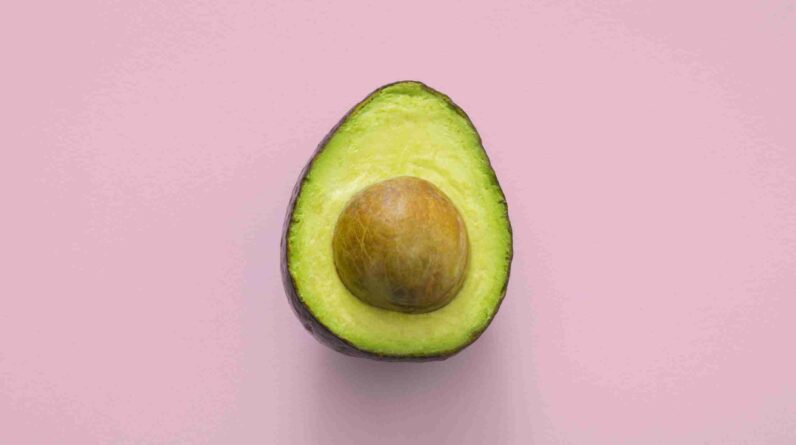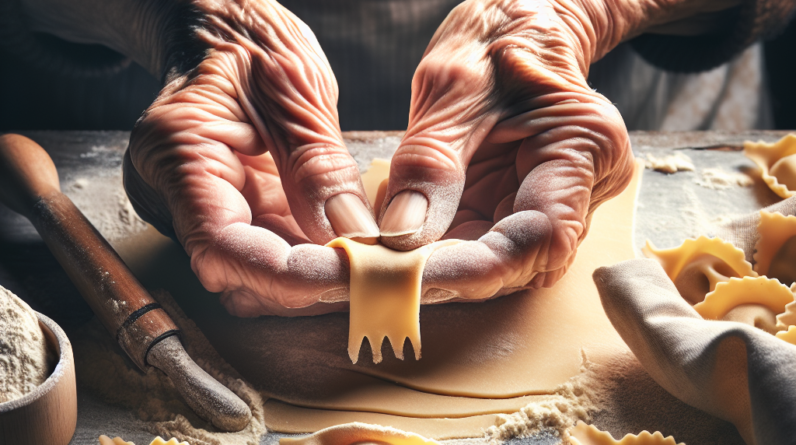Let’s take a journey through Italy’s flavorful cuisine as we explore the captivating differences between northern and southern Italian cooking styles. From the lush, mountainous regions of the north to the sun-kissed beaches of the south, each region showcases its unique culinary traditions and ingredients. Join us as we savor the diverse flavors, techniques, and cultural influences that define these two distinct Italian cuisines.

Overall Cuisine Characteristics
Italian cuisine is known for its rich flavors, diverse ingredients, and simple yet elegant cooking techniques. Whether you’re exploring the northern or southern regions of Italy, you’ll find a culinary experience that reflects the unique characteristics of each area. From the rich and creamy dishes of the north to the vibrant and bold flavors of the south, the cuisine in Italy varies greatly based on regional influences and local traditions.
Flavors and Ingredients
When it comes to flavors and ingredients, there are notable differences between northern and southern Italian cuisine. In the north, the cuisine is heavily influenced by neighboring countries like France, Switzerland, and Austria. This is reflected in the use of butter, cream, and rich sauces in dishes such as risotto, polenta, and creamy pasta dishes. Northern Italian cuisine also emphasizes the use of high-quality ingredients such as truffles, Parmigiano-Reggiano cheese, and fresh herbs.
On the other hand, southern Italian cuisine is characterized by bold and robust flavors. The south has a warmer climate, which means that ingredients like tomatoes, olive oil, and fresh herbs are abundant. Southern Italian dishes often showcase the use of these ingredients, resulting in vibrant and flavorful dishes. Popular southern ingredients include garlic, chili peppers, anchovies, and capers.
Cooking Techniques
The cooking techniques used in northern and southern Italy also differ significantly. In the north, the focus is on slow cooking and intricate preparations. Braising, stewing, and roasting are common cooking methods used for meats and poultry. For example, the famous dish ossobuco is prepared by slowly cooking veal shanks in a rich broth until tender.
In the south, the cooking techniques tend to be simpler and quicker. Many southern dishes are cooked with high heat, such as grilling and baking, to enhance the natural flavors of the ingredients. One iconic cooking method in southern Italy is the use of a wood-fired oven for baking pizzas, resulting in a crispy crust and smoky flavor.
Regional Influences
The regional influences in northern and southern Italian cuisine are derived from both neighboring countries and historical influences. In the north, there is a strong influence from countries like France and Austria, due to their close proximity to Italy. This is evident in the use of ingredients and cooking techniques, as well as the prevalence of dishes like ravioli, gnocchi, and fondue.
In the south, the cuisine has been shaped by its Mediterranean location and the influence of neighboring countries such as Greece, Spain, and North Africa. This is reflected in the abundant use of olive oil, fresh seafood, and aromatic herbs like basil, oregano, and parsley.

Regional Differences in Pasta
Types of Pasta
Pasta is a staple of Italian cuisine, and each region has its own unique types of pasta. In the northern regions, you’ll commonly find stuffed pasta like agnolotti and tortellini. These delicate pastas are often filled with savory ingredients such as meat, cheese, or vegetables. Northern Italians also enjoy flat pasta shapes like tagliatelle and pappardelle, which are perfect for soaking up rich sauces.
In the south, pasta is more often made from durum wheat semolina, resulting in a chewier texture. Southern Italian pasta shapes include the iconic long and thin spaghetti, as well as thick and tubular varieties like penne and rigatoni. These pasta shapes are well-suited for hearty sauces and are often paired with seafood or tomato-based sauces.
Sauce Pairings
The choice of pasta sauce also varies between northern and southern Italy. In the north, creamy and rich sauces like carbonara, Alfredo, and Bolognese are commonly used. These sauces are usually made with ingredients like cream, butter, and meat, resulting in a velvety and indulgent flavor profile.
In the south, tomato-based sauces are prevalent, as well as simple olive oil and garlic preparations. Southern Italians are known for their love of fresh tomatoes, which are often used to make flavorful sauces like marinara and arrabbiata. These sauces pair well with the chewier pasta found in the south and highlight the bold flavors of the region.
Pizza Styles
Pizza is a beloved dish worldwide, but in Italy, it is an art form. There are distinct pizza styles that originated in different regions of Italy, showcasing the diversity in toppings and dough preparations.
Traditional Toppings
In the north, the pizza toppings tend to be more delicate and refined. Popular toppings include prosciutto, arugula, mushrooms, and truffles. These toppings are often lightly applied to the pizza, allowing the flavors to meld together in a harmonious way. The focus is on quality ingredients that enhance the flavor of the dough.
In the south, the pizza toppings are bolder and more abundant. Classic southern toppings include tomatoes, mozzarella cheese, basil, olives, and anchovies. These toppings create a burst of flavor with each bite and are often generously spread across the pizza. The emphasis is on robust and contrasting flavors that create a taste sensation.
Dough Preparation
The dough preparation for pizza also differs between northern and southern Italy. In the north, the dough tends to be thinner and crispier, resembling a flatbread. This style of dough allows the toppings to shine and provides a delicate balance between the flavors.
In the south, the dough is thicker and more pillowy, with a chewy texture. This type of dough is best suited to hold the abundance of toppings and results in a more substantial and satisfying pizza. The dough is often cooked in a wood-fired oven, giving it a slight smokiness and unique flavor.

Cheese Varieties
Italian cuisine is renowned for its variety of cheeses, and there are distinct differences between the cheeses produced in the north and south of Italy.
Northern Italian Cheeses
The northern regions of Italy are famous for their production of hard cheeses like Parmigiano-Reggiano and Grana Padano. These cheeses are aged for a long time, resulting in a rich and nutty flavor. They are often grated or shaved over pasta dishes or enjoyed on their own as a flavorful snack.
In addition to the hard cheeses, the north also produces soft and creamy cheeses like Gorgonzola and Taleggio. These cheeses have a more pungent flavor and are commonly used in risottos, sauces, and as a topping for pizza.
Southern Italian Cheeses
In the south, there is a greater emphasis on fresh and soft cheeses. Mozzarella is perhaps the most famous southern Italian cheese and is used in a variety of dishes, including pizza, pasta, and salads. Buffalo mozzarella, made from the milk of water buffalos, is especially prized for its creamy texture and delicate flavor.
Other popular southern Italian cheeses include ricotta, provolone, and caciocavallo. Ricotta is a versatile cheese that is used in both sweet and savory dishes, while provolone and caciocavallo add a salty and sharp flavor to a variety of recipes.
Seafood Specialties
Italy is surrounded by the Mediterranean Sea, which provides an abundance of fresh seafood for both northern and southern regions. The different cooking styles and flavors of each region are showcased in their seafood dishes.
Northern Seafood Dishes
In the north, seafood dishes often feature delicate flavors and intricate preparations. One classic northern seafood dish is Risotto ai Frutti di Mare, a creamy and flavorful risotto made with a variety of mixed seafood such as shrimp, clams, and mussels. Another popular dish is Baccalà Mantecato, which is a creamy puree made from dried and salted codfish.
Southern Seafood Dishes
The south is known for its vibrant and bold seafood dishes, often influenced by the Mediterranean and Arabic flavors. One famous southern dish is Spaghetti alle Vongole, which combines clams, garlic, white wine, and chili flakes for a burst of flavors. Another popular dish is Calamari Fritti, where fresh squid is lightly battered and deep-fried until crispy.
Meat and Poultry
Both northern and southern Italy offer a variety of delicious meat and poultry dishes, each reflecting their unique culinary traditions.
Northern Meat Dishes
In the north, meat dishes often feature slow cooking and braising techniques, resulting in tender and flavorful dishes. One famous dish is Osso Buco, a flavorful braised veal shank served with a rich tomato and vegetable sauce. Another popular dish is Polenta e Osei, which consists of roasted small game birds served with creamy polenta.
Southern Meat Dishes
In the south, meat dishes tend to be simpler and cooked with high heat to enhance the natural flavors. One iconic southern dish is Arrosticini, which consists of skewered and grilled pieces of lamb or mutton. Another popular dish is Salsicce con Fagioli, which is a hearty stew made with sausages and beans.
Antipasti and Appetizers
Italian cuisine is famous for its antipasti, or appetizers, which showcase a variety of flavors, ingredients, and cooking techniques. There are distinct differences between the antipasti of northern and southern Italy.
Northern Antipasti
In the north, antipasti often feature cured meats, cheeses, and marinated vegetables. One popular northern antipasto is Prosciutto e Melone, which combines paper-thin slices of cured ham with sweet and juicy melon. Another classic dish is Vitello Tonnato, which features thinly sliced veal topped with a creamy tuna sauce.
Southern Antipasti
In the south, antipasti tend to emphasize the use of fresh seafood, olives, and sun-dried tomatoes. One traditional southern antipasto is Bruschetta, which consists of toasted bread topped with fresh tomatoes, basil, garlic, and olive oil. Another popular dish is Caponata, a Sicilian specialty that combines eggplant, tomatoes, olives, and capers for a sweet and tangy flavor.
Vegetable-based Dishes
Italy is known for its love of fresh and seasonal vegetables, and the cuisine from each region reflects this passion through their vegetable-based dishes.
Favoring Regional Produce
Both northern and southern Italian cuisine focuses on using locally sourced and seasonal produce. In the north, you’ll find dishes like Risotto ai Funghi, which showcases the earthy flavors of wild mushrooms. In the south, vegetables like eggplant, zucchini, and tomatoes are abundant and often featured in dishes like Caprese Salad and Parmigiana di Melanzane.
Traditional Vegetable Recipes
Each region also has its own traditional vegetable recipes. In the north, you’ll find dishes like Insalata di Radicchio, a salad made with bitter radicchio lettuce, or Puntarelle alla Romana, a dish made from a type of chicory dressed with anchovies and garlic. In the south, dishes like Pasta alla Norma, which combines eggplant, tomatoes, and ricotta salata, are popular and showcase the vibrant flavors of the region.
Bread and Baking
Bread is an essential part of Italian cuisine, and each region has its own unique bread and baking traditions.
Northern Breads and Pastries
In the north, bread is often made with white flour and has a soft and fluffy texture. One famous northern bread is Focaccia, a flatbread topped with olive oil and various toppings such as rosemary, olives, or onions. Northern Italy is also known for its pastries, such as the buttery and flaky Croissants, which are perfect for breakfast or an afternoon treat.
Southern Breads and Pastries
In the south, bread is typically made with a mixture of white and whole wheat flour, resulting in a denser and heartier loaf. One classic southern bread is Ciabatta, a rustic bread with a chewy texture and a slightly sour flavor. Southern Italy is also renowned for its pastries, such as Cannoli, which are crispy pastry tubes filled with sweet ricotta cream or chocolate.
Desserts and Sweets
Italian desserts are famous worldwide, and both northern and southern Italy have their own unique regional varieties.
Regional Dessert Varieties
In the north, desserts often feature rich and creamy flavors. One iconic northern dessert is Tiramisu, which combines layers of espresso-soaked ladyfingers, mascarpone cheese, and cocoa powder. Another popular dessert is Panna Cotta, a silky custard made with cream and served with various fruit coulis or caramel sauce.
In the south, desserts tend to be lighter and fruit-driven. One classic southern dessert is Cannoli, which is a crispy pastry tube filled with sweet ricotta cream, candied fruit, and chocolate chips. Another beloved dessert is Sfogliatelle, a flaky pastry filled with a sweet and creamy ricotta or custard filling.
Northern vs Southern Sweets
While both northern and southern Italian desserts are delicious, they offer distinct flavor profiles. Northern desserts tend to be richer, creamier, and more indulgent, while southern desserts showcase bold flavors, fresh fruits, and lighter textures. Whether you have a sweet tooth or prefer a more refreshing dessert, there is a regional specialty to satisfy every craving in Italy.
In conclusion, the cuisine of northern and southern Italy reflects the unique characteristics of each region. From the flavors and ingredients to the cooking techniques, there are distinct differences that make each region’s cuisine special. Whether you prefer the rich and creamy dishes of the north or the bold and vibrant flavors of the south, exploring the culinary diversity in Italy is a delightful journey for every food lover.










